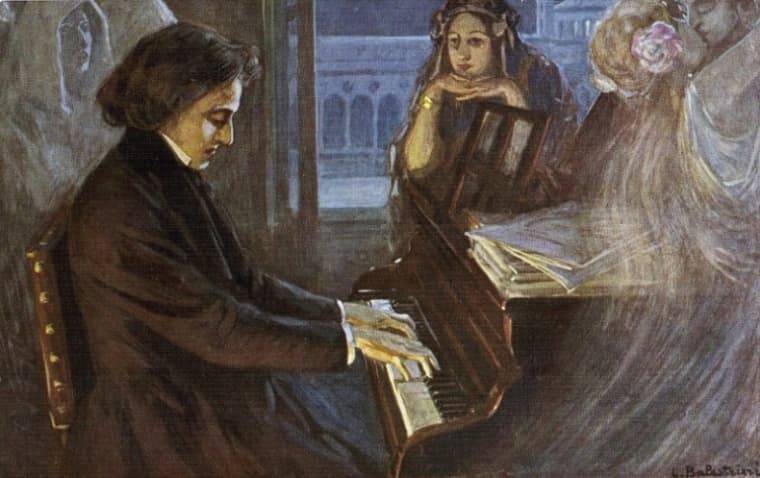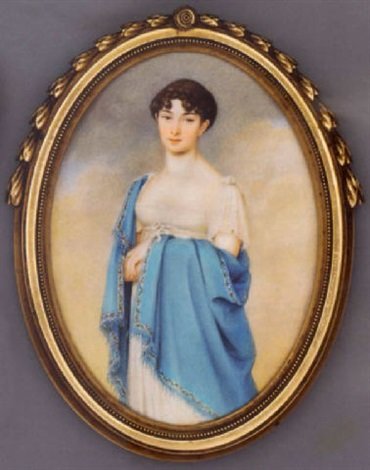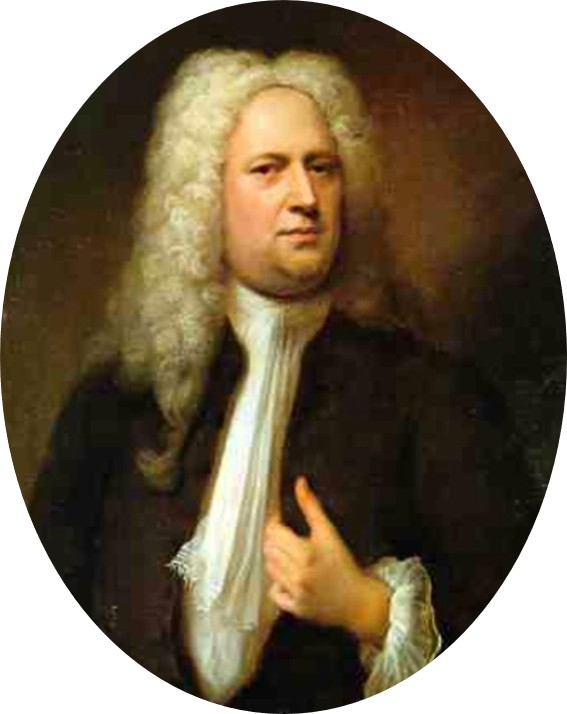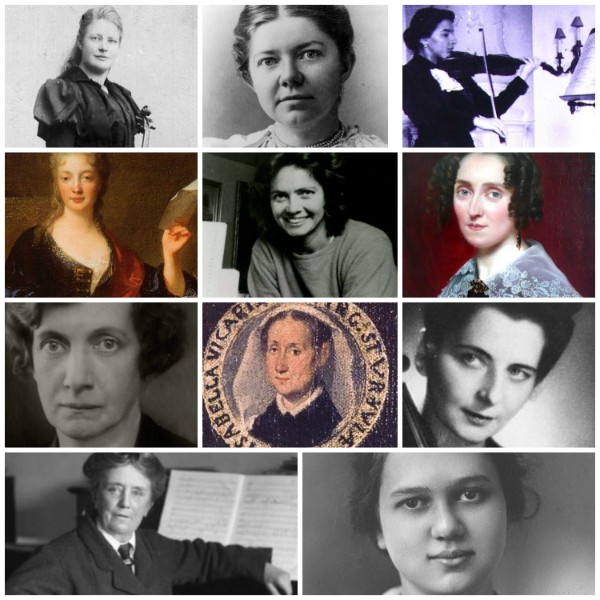We, classical music lovers, can be a moody bunch, and sometimes we just get in the mood to listen to sad piano music. And when it comes to sad piano music, Frédéric Chopin always delivers, especially when it comes to his nocturnes.

Chopin playing the piano
The other day, I listened to every nocturne Chopin wrote, picked out seven that struck me as especially tragic and then compiled them into this extremely unscientific list. Then, to add some extra heartache, I tried to rank them.
So here, in order of least to most melancholy, are my personal rankings of Chopin’s saddest nocturnes. Get your Kleenex boxes out and enjoy.
7. Nocturne Op. 37, No. 1 in G minor. Lento
Frédéric Chopin: Nocturne No. 11 in G Minor, Op. 37, No. 1 (Meng-Chieh Liu, piano)
Chopin’s two nocturnes from his opus 37 were written in 1839 and published the following year. At the time, he was living with author George Sand and her children on the island of Mallorca, off the coast of Spain, in a former monastery dating from the thirteenth century. Unusually, Chopin dedicated the two pieces to no one.
The central portion of the nocturne evokes the aesthetic of a church chorale, which has led to some listeners and historians theorizing that the work’s inspiration was religious in nature. Or maybe it was simply a nod to his and Sand’s lodging. In any case, no matter what originally sparked its creation, this nocturne ended up being one of the most wistful piano pieces Chopin ever wrote, making it a perfect fit for this list.
6. Nocturne Op. 15, No. 1 in F major. Andante cantabile
Frédéric Chopin: Nocturne No. 4 in F Major, Op. 15, No. 1 (Meng-Chieh Liu, piano)
This nocturne is the first from a set of three. The three were composed in the early 1830s and published in 1834, and dedicated to Ferdinand Hiller, a pianist and composer who rubbed elbows with pretty much every great Romantic era composer, from Felix Mendelssohn to Richard Wagner.
The opening section of this nocturne, with its gently rolling triplets and elegant ornamental notes, is melancholy, but its most outwardly emotional portion is its hurried center section, marked “con fuoco”, or “with fire.” It’s a perfect portrait of sadness and frustration intertwined.
5. Nocturne Op. posth in C minor. Andante sostenuto

Portrait of Frédéric Chopin by Maria Wodzińska
Frédéric Chopin: Nocturne in C Minor, Op. posth. [KKIVb/8] (Meng-Chieh Liu, piano)
When Chopin died at the age of 39, he left behind a stack of manuscripts that had never been published, and the manuscript for this nocturne in C-minor was among them. Chopin instructed his survivors to burn whatever hadn’t yet been published, but luckily for music lovers, his family didn’t listen. Even so, this nocturne wasn’t published until 1938, almost a century after Chopin’s death.
This nocturne is dark and oozes sophistication, and its ever-shifting harmonies create a mood of tragic instability. Interestingly, only three of Chopin’s nocturnes end in a minor key. The fact that this is one of them is a reason why it ended up on my list.
4. Nocturne Op. 48, No. 1 in C minor. Lento
Frédéric Chopin: Nocturne No. 13 in C Minor, Op. 48, No. 1 (Meng-Chieh Liu, piano)
The two nocturnes in Chopin’s op. 48 were published in 1842 and dedicated to his piano pupil Laure Duperré.
The first nocturne of the set begins simply enough, but as the minutes pass, its texture becomes more and more complicated. This becomes increasingly clear during a reverent chorale-like section, similar in spirit to the Op. 37, No. 1 earlier on this list. That chorale builds in intensity until the turbulent octaves in the work’s middle hit. They’re quite shocking: they sound like they belong in a work by Liszt. After this flurry of virtuosity, the nocturne ends with a stirring reimagining of the opening theme.
Pianist and Chopin contemporary Theodor Kullak wrote, “The design and poetic contents of this nocturne make it the most important one that Chopin created; the chief subject is a masterly expression of a great powerful grief.” Who am I to argue with Theodor Kullak? This nocturne clearly belongs on this list.
3. Nocturne Op. 27, No. 1 in C sharp minor. Larghetto
Frédéric Chopin: Nocturne No. 7 in C-Sharp Minor, Op. 27, No. 1 (Meng-Chieh Liu, piano)
The two Op. 27 nocturnes were written in 1836 and published in 1837, and were dedicated to his student Comtesse Apponyi.

Therese Apponyi
This is such a brooding nocturne. The bass arpeggios in the left hand, along with an insistent melody that features repeating notes tolling like a bell, combine to make a mood that is dark, distrustful, and maybe even a little bitter. The center section – marked “più mosso”, or “more motion” – bubbles up in a brutally unhappy way before morphing into a brief, totally unexpected dance. Afterward, the music slides back into its original broodiness. The only thing keeping this nocturne from being a spot or two higher on this list is a little tiny glimmer of what critic James Huneker called “sunshine” at the end.
2. Nocturne Op. 72, No. 1 in E minor. Andante
Frédéric Chopin: Nocturne No. 19 in E Minor, Op. 72, No. 1 (Meng-Chieh Liu, piano)
The heartbreaking Op. 72 nocturne has a fascinating history. Despite its late opus number, it was actually written in 1826, when Chopin was just a teenager, and it was actually the first nocturne that he ever wrote.
At that time, the nocturne was a relatively new genre, having been popularized by Irish pianist John Field. Field himself would prove to be critical of the direction that Chopin took piano music: he famously dismissed Chopin as a “sickroom talent.”
When it came to this particular nocturne, at least, it’s possible that Chopin might have agreed with Field’s critique, as this work was never published in his lifetime. It was only published in 1855.
As sad as this piece might be, though, I don’t think it was his saddest. In my opinion, that dubious honor belongs to…
1. Nocturne Op. posth in C sharp minor. Lento con gran espressione
Frédéric Chopin: Nocturne in C-Sharp Minor, Op. posth. (Meng-Chieh Liu, piano)
This is the piece in which Chopin truly perfected the recipe for a tragic nocturne. The key of C-sharp minor, often associated with melancholy and sadness? Check. The slow, mournful arpeggios in the left hand? Check. Flowing rhythms and rubato? Cascading chromaticism? A tragic, aria-like melody? Check. It’s all here.
This nocturne was composed in 1830. The dedication read “To my sister Ludwika as an exercise before beginning the study of my second Concerto.” Poetically, Ludwika was one of the Chopin family members who vetoed Frederic’s request that all of his unpublished works be burned upon his death. The work was published in 1870, and ultimately became one of Chopin’s most famous.
The work sounds even sadder in a transcription for violin. I rest my case!
Augustin Hadelich plays Chopin Nocturne c sharp minor (arr. Milstein) with Charles Owen
What nocturne do you think is Chopin’s saddest? Let us know!
For more of the best in classical music, sign up for our E-Newsletter




Very sad, not good to get one up and going!
thank you so much for unpacking chopin for us all, appreciative gratitude! i loved your selection
Op 62 no 2 and op 55 no 2 should be here. Def op 62 no 2 is pure depression at least top 3 if not just first place.. op 55 no 2 is more melancholic sounding.
I am 77 years old, not an ongoing fan of classical music. At the age of 16 or 17, I was awake late one night and was listening to Franklin McCormick on the radio. Always loved his show. Anyway, one night he played a very haunting piece of music that has made me search for it on and off since then. Looks like my search is over. Your #1 Nocturne Op. posth in C sharp minor appears to be it. I thank you from the bottom of my heart. It is truly lovely!